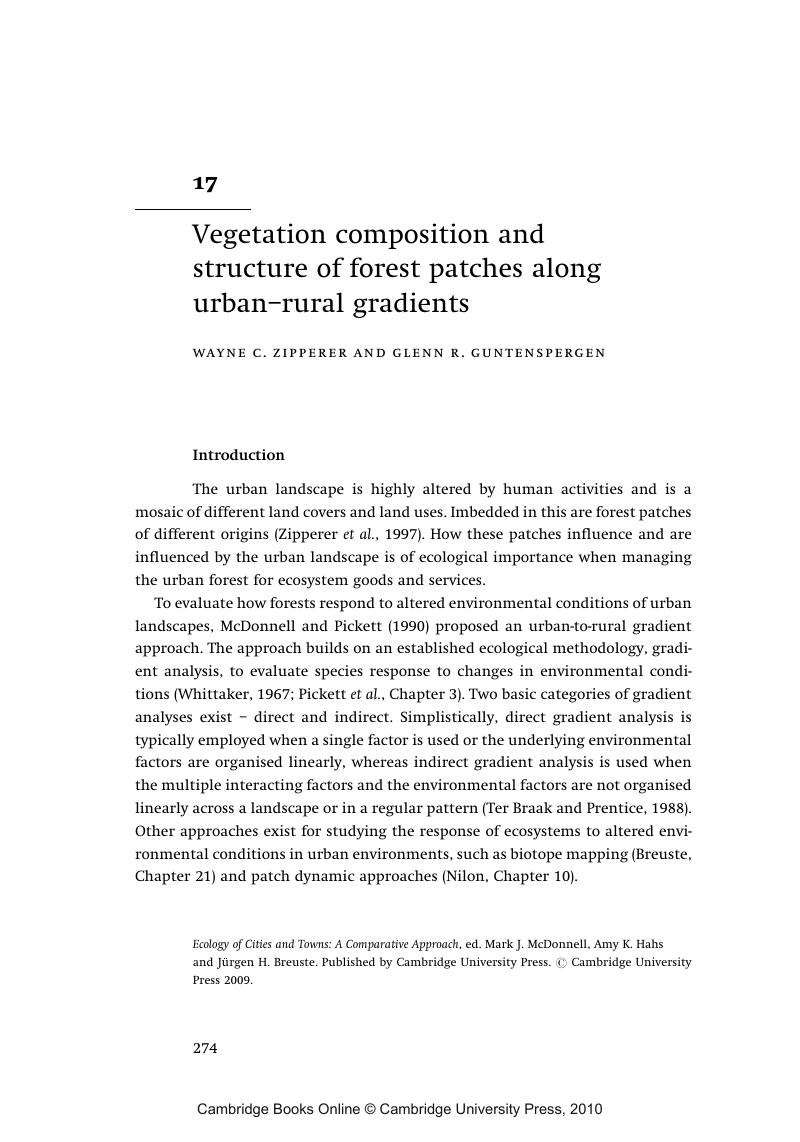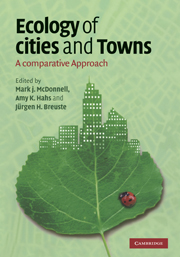Book contents
- Frontmatter
- Contents
- List of contributors
- Preface
- 1 Introduction: Scope of the book and need for developing a comparative approach to the ecological study of cities and towns
- Part I Opportunities and challenges of conducting comparative studies
- Part II Ecological studies of cities and towns
- 8 Responses of faunal assemblages to urbanisation: global research paradigms and an avian case study
- 9 Effect of urban structures on diversity of marine species
- 10 Comparative studies of terrestrial vertebrates in urban areas
- 11 The ecology of roads in urban and urbanising landscapes
- 12 Spatial pattern and process in urban animal communities
- 13 Invertebrate biodiversity in urban landscapes: assessing remnant habitat and its restoration
- 14 Arthropods in urban ecosystems: community patterns as functions of anthropogenic land use
- 15 Light pollution and the impact of artificial night lighting on insects
- 16 A comparison of vegetation cover in Beijing and Shanghai: a remote sensing approach
- 17 Vegetation composition and structure of forest patches along urban–rural gradients
- 18 Environmental, social and spatial determinants of urban arboreal character in Auckland, New Zealand
- 19 Carbon and nitrogen cycling in soils of remnant forests along urban–rural gradients: case studies in the New York metropolitan area and Louisville, Kentucky
- 20 Investigative approaches to urban biogeochemical cycles: New York metropolitan area and Baltimore as case studies
- Part III Integrating science with management and planning
- Part IV Comments and synthesis
- References
- Index
- Plate section
17 - Vegetation composition and structure of forest patches along urban–rural gradients
Published online by Cambridge University Press: 04 March 2010
- Frontmatter
- Contents
- List of contributors
- Preface
- 1 Introduction: Scope of the book and need for developing a comparative approach to the ecological study of cities and towns
- Part I Opportunities and challenges of conducting comparative studies
- Part II Ecological studies of cities and towns
- 8 Responses of faunal assemblages to urbanisation: global research paradigms and an avian case study
- 9 Effect of urban structures on diversity of marine species
- 10 Comparative studies of terrestrial vertebrates in urban areas
- 11 The ecology of roads in urban and urbanising landscapes
- 12 Spatial pattern and process in urban animal communities
- 13 Invertebrate biodiversity in urban landscapes: assessing remnant habitat and its restoration
- 14 Arthropods in urban ecosystems: community patterns as functions of anthropogenic land use
- 15 Light pollution and the impact of artificial night lighting on insects
- 16 A comparison of vegetation cover in Beijing and Shanghai: a remote sensing approach
- 17 Vegetation composition and structure of forest patches along urban–rural gradients
- 18 Environmental, social and spatial determinants of urban arboreal character in Auckland, New Zealand
- 19 Carbon and nitrogen cycling in soils of remnant forests along urban–rural gradients: case studies in the New York metropolitan area and Louisville, Kentucky
- 20 Investigative approaches to urban biogeochemical cycles: New York metropolitan area and Baltimore as case studies
- Part III Integrating science with management and planning
- Part IV Comments and synthesis
- References
- Index
- Plate section
Summary

- Type
- Chapter
- Information
- Ecology of Cities and TownsA Comparative Approach, pp. 274 - 286Publisher: Cambridge University PressPrint publication year: 2009
- 9
- Cited by

